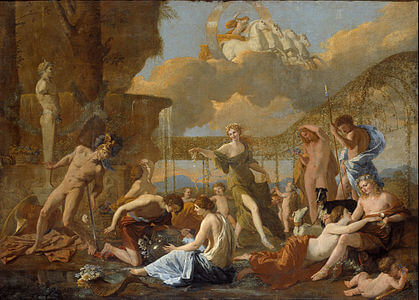“WHAT’S THE POINT OF TRAVELING IF YOU TAKE YOURSELF ALONG? IT’S THE SOUL WHICH NEEDS TO BE CHANGED NOT THE WEATHER”
At Carré d’artistes, we are convinced that art has the power to make us travel, to make us discover other places. Other parts of the world but also ourselves. As the Roman philosopher Seneque put it aptly: “What’s the point of traveling if you take yourself along? It’s the soul which needs to be changed not the weather”. This way, without any train or plane ticket, art is able to carry us along to those places we didn’t even think of going to: to the far reaches of our soul, due to the emotions it triggers within us.
(Oeuvre d'art "Arbre d'été")
In fact, this is the origin itself of the word “emotion”: this word is derived from Latin e movere, which means “shake” or “set in motion”. When faced with artwork, it’s our entire being that is shaken up, within its limits. Through pondering, it’s possible to forget about troubles and anxieties, everyday life, and our rather stark world, but also what surrounds us, our convictions, our habits in life and perception. Art allows us to go beyond the body, it opens the horizon of our spirit!
As a matter of fact, one comes across the theme of traveling quite often, in the History of Art. For French artists, “traveling in Italy” was for a long time essential in the classic artistic training! Wanting to complete their studies in Fine Arts, they discovered new landscapes and new climates, but mainly ran to Rome to replicate remnants and antique works and observed buildings and works of Renaissance artists, in Florence and Venice. Some like Nicolas Poussin (1594-1665), fell in love with Italy and spent a good part of their life.

(Oeuvre de Nicolas Poussin inspiré par l'Italie)
Others like Eugene Delacroix (1798-1863) went to explore other lands: contrary to his rival Jean-Auguste-Dominique Ingres (1780-1867), who painted his famous Bain Turc (Turkish Bath) (1862) without setting foot in Turkey or any other country in the Arabian world, Delacroix took pleasure through extensively studying watercolors during his stay in North Africa. Iconic, these sketches find its culmination in the painting Les Femmes d’Alger dans leur appartement (The Women of Algiers in their apartment) (1834): in contrast to Ingres, this work makes us actually travel somewhere, rather than the erotic fantasies of the painter!
But real or imaginary change of scene is always intense: the framework of the painting is like a window, which leads to a world of its own, almost a stunning one. Some let you see a faraway land and others like abstract painters, allow the mind to wander around in a universe, filled with extraordinary colors, lines and shapes. Ideas dance around and trigger movement…This is the reason why art and travel are closely related and inspire one another.


1.png)













